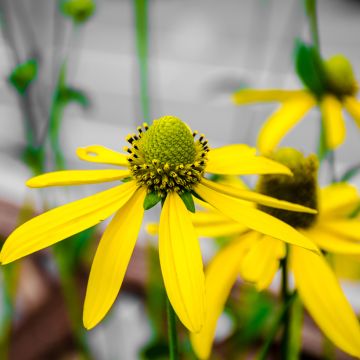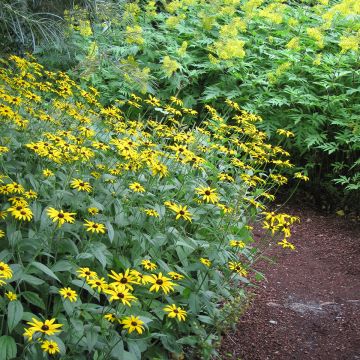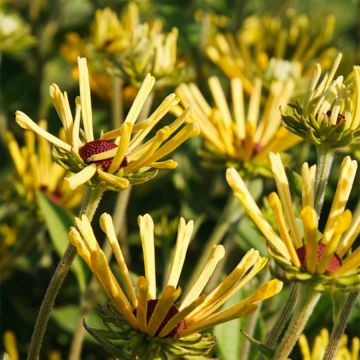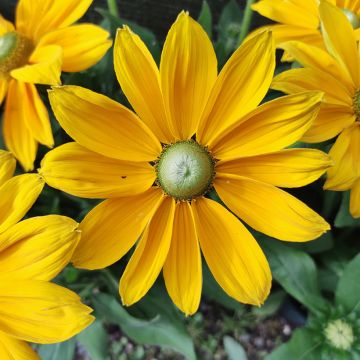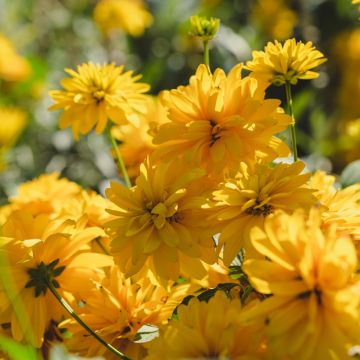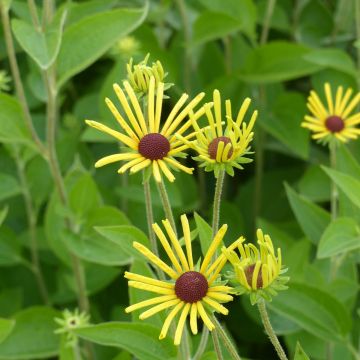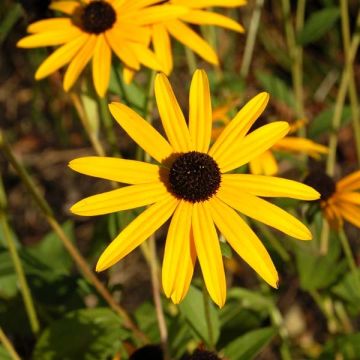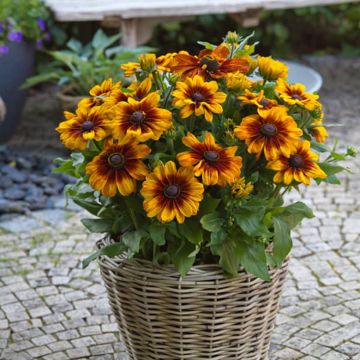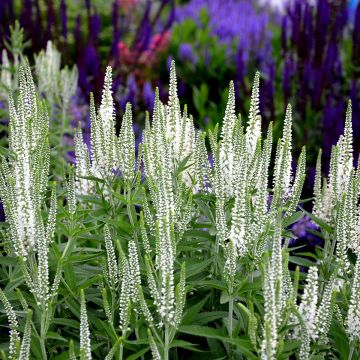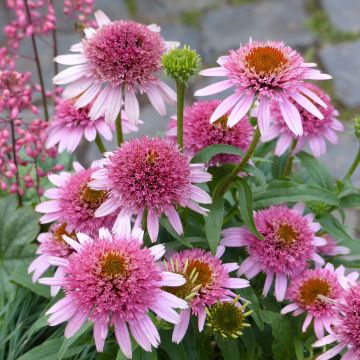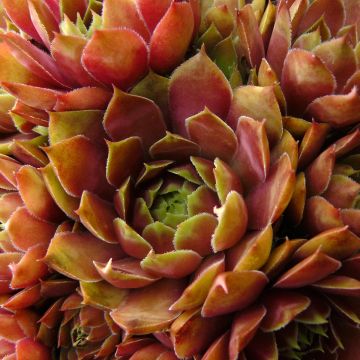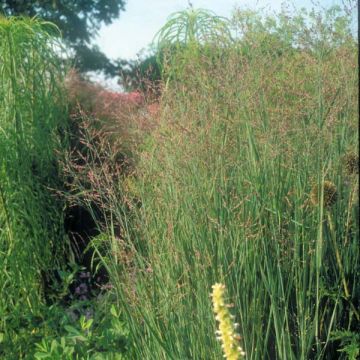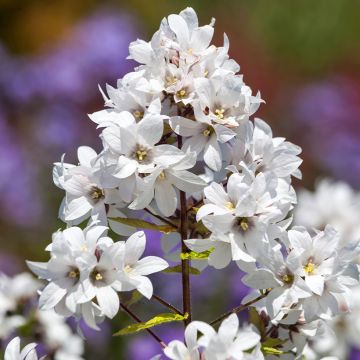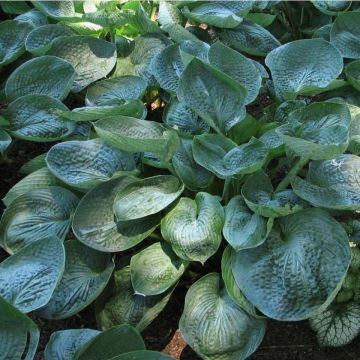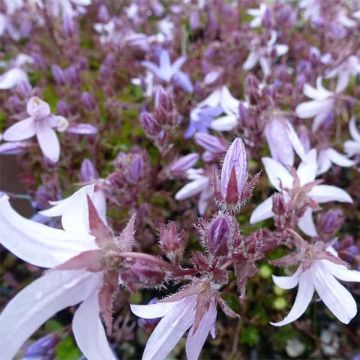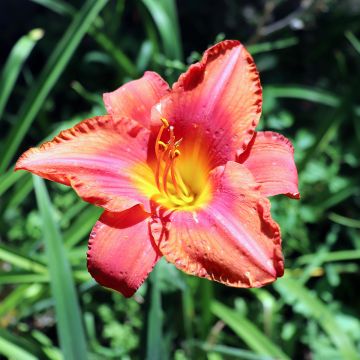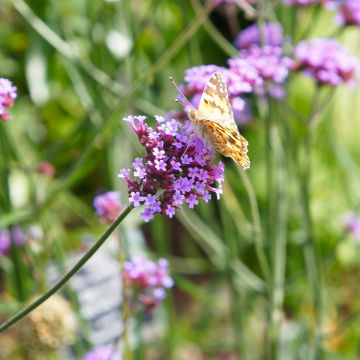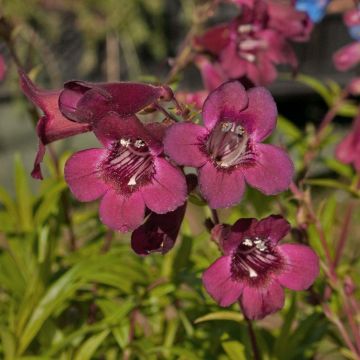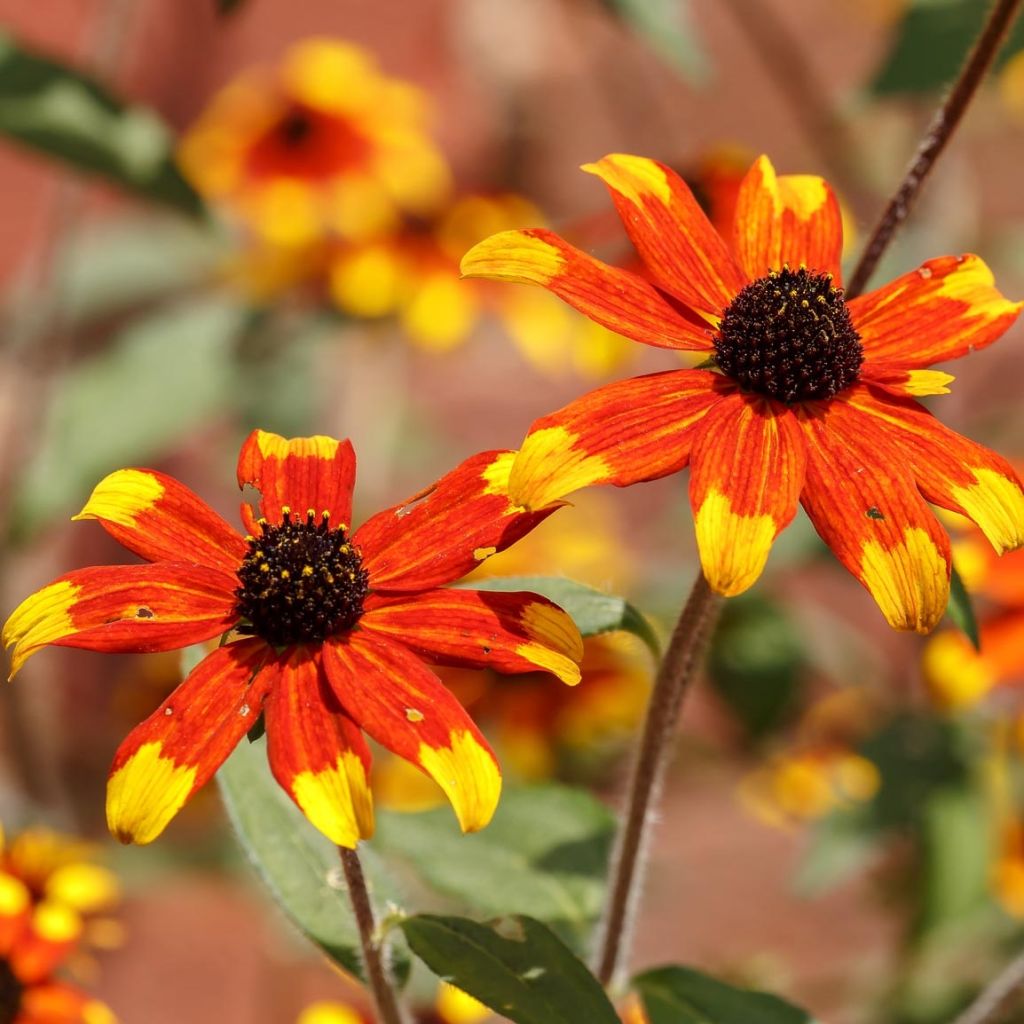

Rudbeckia triloba Prairie Glow
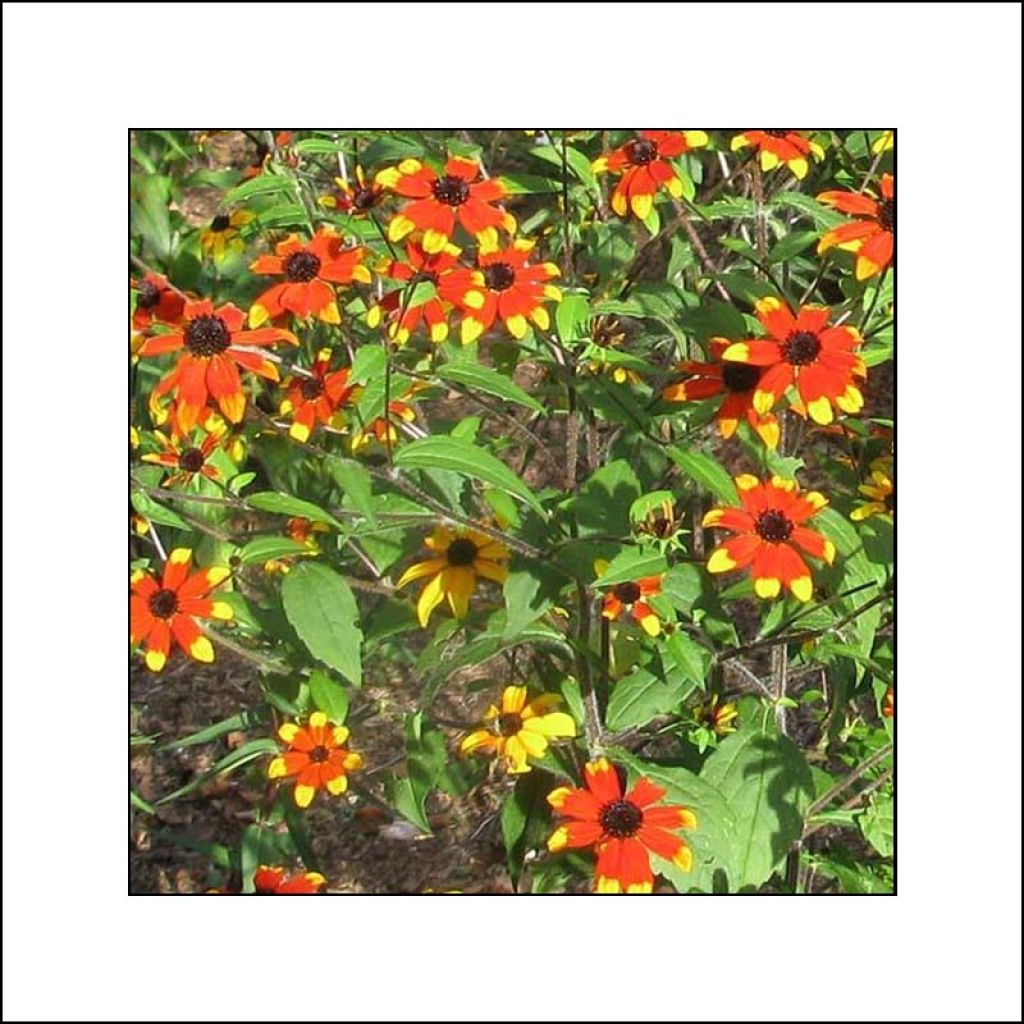

Rudbeckia triloba Prairie Glow
Rudbeckia triloba Prairie Glow
Rudbeckia triloba Prairie Glow
Brown-eyed Susan, Thin-leaved Coneflower, Three-lobed Rudbeckia
This item cannot be shipped to the selected country
Delivery charge from €5.90
More information
Schedule delivery date,
and select date in basket
This plant carries a 12 months recovery warranty
More information
We guarantee the quality of our plants for a full growing cycle, and will replace at our expense any plant that fails to recover under normal climatic and planting conditions.
From €5.90 for pickup delivery and €6.90 for home delivery
Express home delivery from €8.90.

Does this plant fit my garden?
Set up your Plantfit profile →
Description
The Rudbeckia triloba 'Prairie Glow', related to the large echinaceas, is a tall and extremely generous plant, which will quickly make an impact in a large rustic bed, natural or in a wildflower meadow. Remarkably floriferous, 'Prairie Glow' shines with a thousand flowers resembling small tricolor suns, in red-orange, yellow, and black, which succeed each other from mid-summer until the frosts. Loved by insects and birds, this wild-looking plant will be much appreciated by gardeners. In autumn, the flowering mixes with that of tall asters and the colours of autumn. Although it grows quickly, this rudbeckia does not live very long. However, it self-seeds quite easily in the garden.
The Rudbeckia triloba belongs to the asteraceae family. This plant native to central and eastern areas of the USA grows in the wild, in rather humid places that are not too dry, in open areas, and in disturbed spaces such as roadside edges and fallow lands. It is a short-lived perennial (2 to 3 years) most often considered a biennial. Fresh seeds germinate very quickly in autumn, the plant overwinters as a rosette and forms a beautiful clump in a matter of weeks. The 'Prairie Glow' cultivar was recently obtained in the USA by the American breeder David Cavagnaro.
At maturity, this Rudbeckia forms a clump of leafy stems that will reach about 1 m (3ft) in height and 50 cm (20in) in width. The leaves of the rosette located at the base of this plant are divided into three lobes. On the other hand, the leaves of the stems, arranged alternately, are coarsely toothed. The very rigid stems are dark red in colour and have white hairs. They branch out and bear, from July to October-November, numerous inflorescences organized in heads, and which we call 'flowers'. Each head, about 4-5 cm (2in) wide and with a simple shape, almost naive, has 8 to 9 ligules in red-orange colour with yellow tips, arranged in a collar around a slightly prominent black centre in a conical shape. Under good conditions, a single plant can produce up to eight highly branched flower stems. This nectar-rich and honey-rich flowering is highly visited by pollinating insects. The seeds left in place attract birds, feeding goldfinches and tits at the beginning of winter. The Rudbeckia triloba is anchored by rather short fibrous roots, unsuitable for long periods of drought.
Take advantage of the generosity of the rudbeckia to associate it with ephemeral flowering plants within a « mixed border » in the style of cottage gardens. Choose varieties with softer, almost pastel shades to calm or even tame its conquering colours. Positioned in the background, it will be most effective with tall asters (Aster laevis Calliope, Aster turbinellus), grasses (Panicum virgatum, Miscanthus), and landscape dahlias bulbs (varieties Bishop of Dover and Bishop of York) and a shrubby artemisia. Planted en masse in front of shrub beds, the Rudbeckia 'Prairie Glow' will be magnificent combined with the autumn foliage of deciduous euonymus, cotinus, hydrangea quercifolia, parrotia persica.
Report an error about the product description
Rudbeckia triloba Prairie Glow in pictures
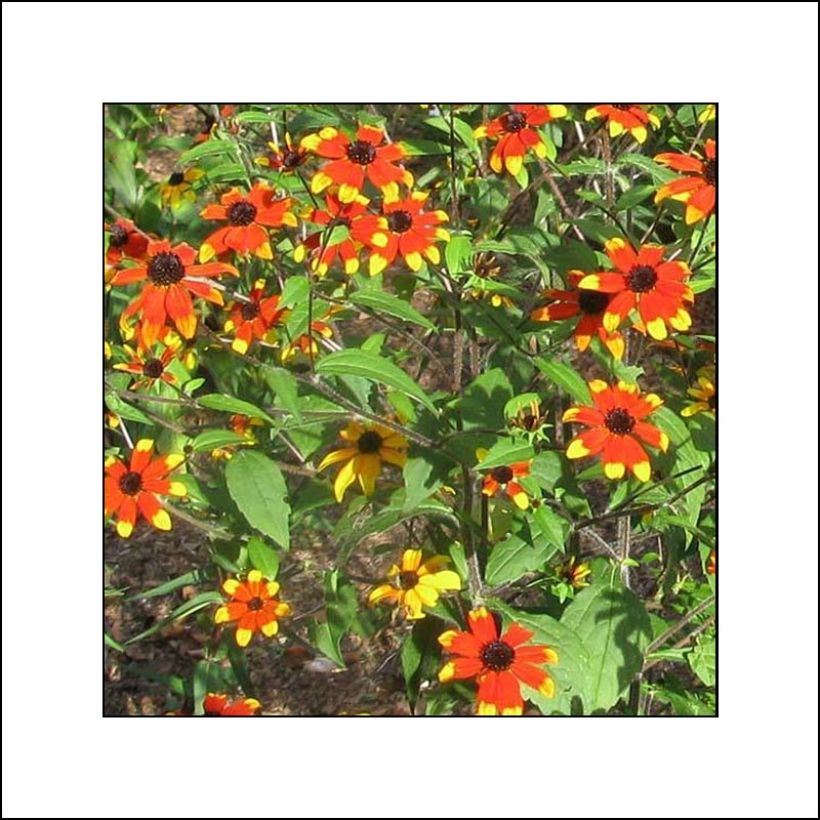

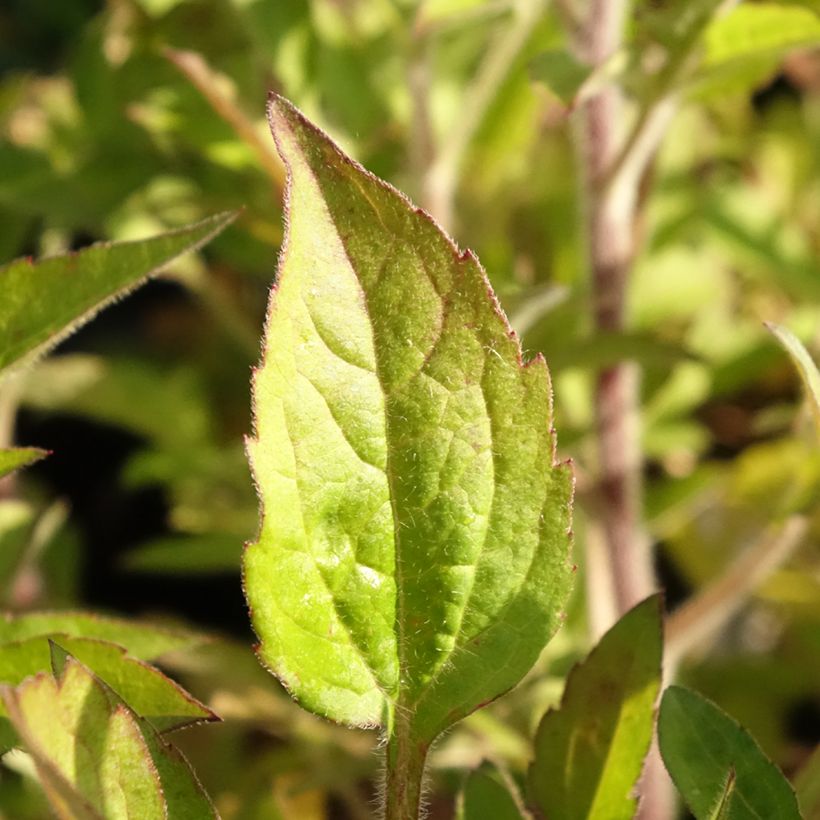

Flowering
Foliage
Plant habit
Botanical data
Rudbeckia
triloba
Prairie Glow
Asteraceae
Brown-eyed Susan, Thin-leaved Coneflower, Three-lobed Rudbeckia
North America
Other Rudbeckia
Planting and care
Hardy and resistant to diseases, this Rudbeckia triloba is easy to grow and requires very little maintenance (simply prune the faded flowers at the beginning of November). It can thrive in ordinary soil, even clay or limestone, as long as it is properly loosened and kept moist in summer. It should be planted in a sunny location. Trim the clump in early winter if you do not want the plant to self-seed. However, its seeds are a valuable source of food for birds during the winter months and help to perpetuate this short-lived perennial plant.
Planting period
Intended location
Care
-
, onOrder confirmed
Reply from on Promesse de fleurs
Summer flowering perennials
Haven't found what you were looking for?
Hardiness is the lowest winter temperature a plant can endure without suffering serious damage or even dying. However, hardiness is affected by location (a sheltered area, such as a patio), protection (winter cover) and soil type (hardiness is improved by well-drained soil).

Photo Sharing Terms & Conditions
In order to encourage gardeners to interact and share their experiences, Promesse de fleurs offers various media enabling content to be uploaded onto its Site - in particular via the ‘Photo sharing’ module.
The User agrees to refrain from:
- Posting any content that is illegal, prejudicial, insulting, racist, inciteful to hatred, revisionist, contrary to public decency, that infringes on privacy or on the privacy rights of third parties, in particular the publicity rights of persons and goods, intellectual property rights, or the right to privacy.
- Submitting content on behalf of a third party;
- Impersonate the identity of a third party and/or publish any personal information about a third party;
In general, the User undertakes to refrain from any unethical behaviour.
All Content (in particular text, comments, files, images, photos, videos, creative works, etc.), which may be subject to property or intellectual property rights, image or other private rights, shall remain the property of the User, subject to the limited rights granted by the terms of the licence granted by Promesse de fleurs as stated below. Users are at liberty to publish or not to publish such Content on the Site, notably via the ‘Photo Sharing’ facility, and accept that this Content shall be made public and freely accessible, notably on the Internet.
Users further acknowledge, undertake to have ,and guarantee that they hold all necessary rights and permissions to publish such material on the Site, in particular with regard to the legislation in force pertaining to any privacy, property, intellectual property, image, or contractual rights, or rights of any other nature. By publishing such Content on the Site, Users acknowledge accepting full liability as publishers of the Content within the meaning of the law, and grant Promesse de fleurs, free of charge, an inclusive, worldwide licence for the said Content for the entire duration of its publication, including all reproduction, representation, up/downloading, displaying, performing, transmission, and storage rights.
Users also grant permission for their name to be linked to the Content and accept that this link may not always be made available.
By engaging in posting material, Users consent to their Content becoming automatically accessible on the Internet, in particular on other sites and/or blogs and/or web pages of the Promesse de fleurs site, including in particular social pages and the Promesse de fleurs catalogue.
Users may secure the removal of entrusted content free of charge by issuing a simple request via our contact form.
The flowering period indicated on our website applies to countries and regions located in USDA zone 8 (France, the United Kingdom, Ireland, the Netherlands, etc.)
It will vary according to where you live:
- In zones 9 to 10 (Italy, Spain, Greece, etc.), flowering will occur about 2 to 4 weeks earlier.
- In zones 6 to 7 (Germany, Poland, Slovenia, and lower mountainous regions), flowering will be delayed by 2 to 3 weeks.
- In zone 5 (Central Europe, Scandinavia), blooming will be delayed by 3 to 5 weeks.
In temperate climates, pruning of spring-flowering shrubs (forsythia, spireas, etc.) should be done just after flowering.
Pruning of summer-flowering shrubs (Indian Lilac, Perovskia, etc.) can be done in winter or spring.
In cold regions as well as with frost-sensitive plants, avoid pruning too early when severe frosts may still occur.
The planting period indicated on our website applies to countries and regions located in USDA zone 8 (France, United Kingdom, Ireland, Netherlands).
It will vary according to where you live:
- In Mediterranean zones (Marseille, Madrid, Milan, etc.), autumn and winter are the best planting periods.
- In continental zones (Strasbourg, Munich, Vienna, etc.), delay planting by 2 to 3 weeks in spring and bring it forward by 2 to 4 weeks in autumn.
- In mountainous regions (the Alps, Pyrenees, Carpathians, etc.), it is best to plant in late spring (May-June) or late summer (August-September).
The harvesting period indicated on our website applies to countries and regions in USDA zone 8 (France, England, Ireland, the Netherlands).
In colder areas (Scandinavia, Poland, Austria...) fruit and vegetable harvests are likely to be delayed by 3-4 weeks.
In warmer areas (Italy, Spain, Greece, etc.), harvesting will probably take place earlier, depending on weather conditions.
The sowing periods indicated on our website apply to countries and regions within USDA Zone 8 (France, UK, Ireland, Netherlands).
In colder areas (Scandinavia, Poland, Austria...), delay any outdoor sowing by 3-4 weeks, or sow under glass.
In warmer climes (Italy, Spain, Greece, etc.), bring outdoor sowing forward by a few weeks.

































